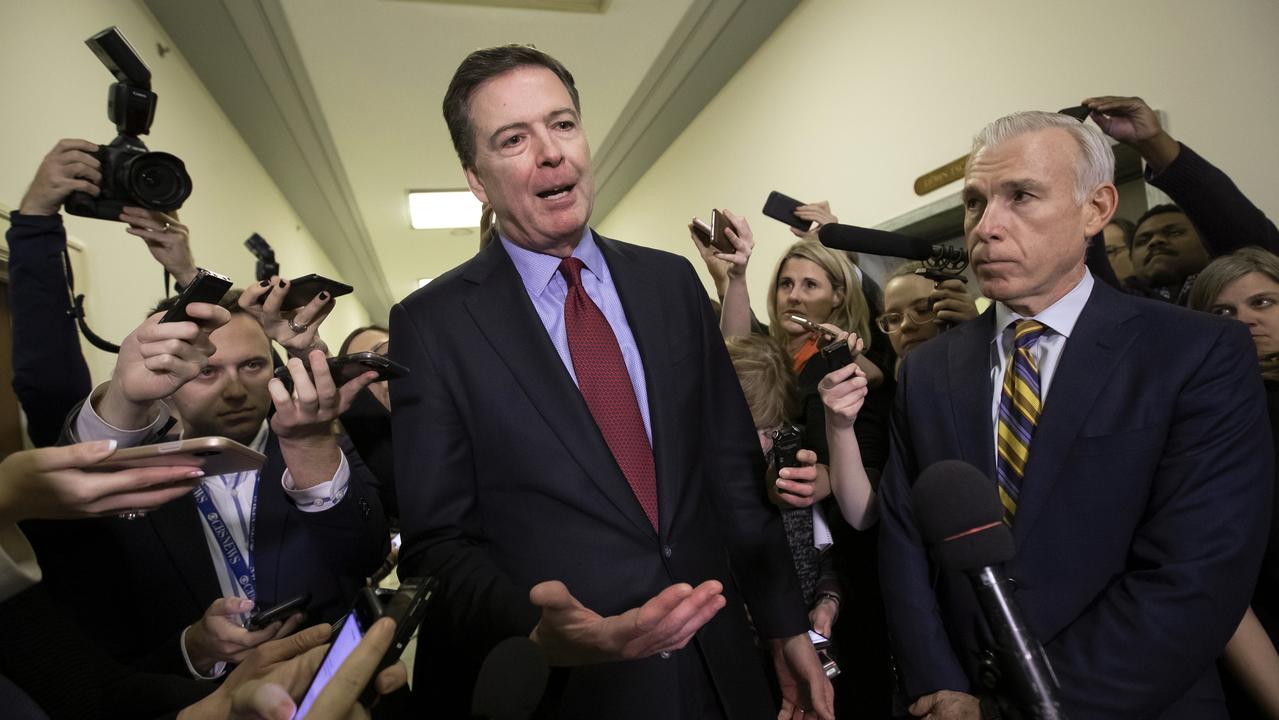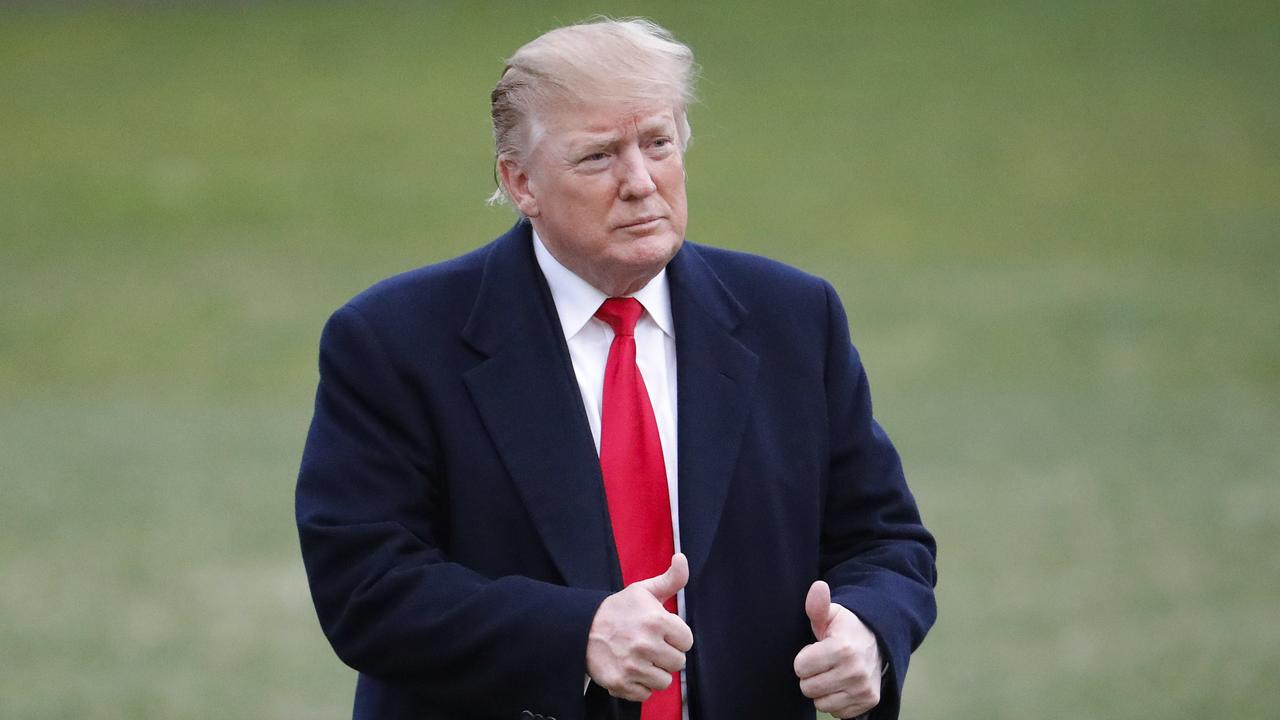
Almost a decade ago, in my first tour of duty as China correspondent for this newspaper, I had the rare opportunity of visiting North Korea — a trip not without a degree of risk. Once inside the hermit kingdom I discovered in a very direct way, to co-opt the words of Dr Strangelove, how North Korea learned to stop worrying and love the bomb.
We were sitting in a minibus on the bumpy, empty freeway from Pyongyang to the South Korean border when I noticed that every few kilometres we passed through a huge set of concrete pillars on either side of the road.
When asked about them, our guide obliged by explaining that these pillars were designed as tank traps. In the event of an invasion, soldiers would apply explosives to the base of every pillar so they would collapse across the road, blocking all vehicles.
“There’s no need for them any more, though,” our guide exclaimed triumphantly. “Now that we have the nuclear bomb” — at the time, it had been tested just a couple of times — “we’re safe. The American imperialists won’t dare invade again like they did in 1950.”
This was the view firmly and widely expressed everywhere I went. Since then, the country’s hereditary Kim-ist dictatorship has not taken a backward step in its development of nuclear bombs, or of missiles to deliver them. How much more firmly and ubiquitously that view will be held now.
It is hardly a surprise, then, that the regime seems so implacably set on its course.
Kim Jong-un, albeit unique in his own unpleasant way, is not alone. The great majority of his 25 million locked-away fellow North Koreans appear absolutely committed to supporting his stance. They know little else. No coherent alternative world view or source of any criticism is accessible to them. The Supreme Leader poses in photographic tableaus with acolytes — usually military officers in comically massive peaked caps, and sometimes people dressed as tech boffins — laughing uproariously and slightly hysterically alongside him at the latest test of a weapon of potentially immeasurable destruction.

They seem absurd to us in the outside world. But to the North Koreans who comprise the primary audience, such scenes are truly joyful, affirming Kim’s humane authority and the ease with which the country is stepping on the gas in its nuclearisation program, confounding its enemies — who constantly underestimate it, and who are still led, as in 1950, by the Americans.
It has been fascinating to read recent detailed accounts by journalists from The Wall Street Journal and The New Yorker of life in North Korea. It would appear remarkably little has changed since my visit in terms of the attitudes of the citizens to whom visitors are permitted access, as well as the pervading dreamlike — or nightmarish — atmosphere.
Unlike those journalists, I was not invited. I took advantage of a brief opening provided by one of the occasional stagings of the country’s Arirang Festival.
Foreigners often are granted more relaxed access at such times, and I travelled there with a couple of other foreign correspondents based in Beijing. We did not reveal our profession to the authorities and we were assisted by a rather mysterious North Korean contact.
This contact warned us that although there were a couple of associates inside the country, these potential helpers could use their smuggled-in Chinese mobile phone SIM cards only near the border, and then sparingly, since they could be traced swiftly by military monitors.
The Arirang Festival is the most spectacular celebration of the Kim cult, during which tens of thousands of young people, with almost unbelievable discipline, display constantly changing coloured cards that combine to create fast-moving images dedicated to the Kim family and to the “reunification of the fatherland”, allegedly the dying words of North Korea’s founding leader, Kim Jong-un’s grandfather Kim Il-sung.
We were accompanied everywhere by two guides, there in part to watch each other. While one was once distracted, the other — bright, and articulate in English — told me in an urgent, confidential tone: “I know that foreigners find this hard to believe because they have told me. But I want you to know, since you ask many questions, that it’s really true for me — I would give my life for the leader without hesitating if I were asked.”
He was smart enough to have worked out — despite continuing propaganda — that South Korea might be materially richer than the North. But, he argued, “as soon as the American troops leave the South, we will be reunified” by acclamation under Kim, and the North would swiftly gain material equivalence.
Because of his role in the embryonic tourism industry, he was granted rare access to the internet. But his email address was shared with a half-dozen people, all assiduously scrutinised, who could view all his incoming and outgoing messages.
The World Wide Web does not exist for North Koreans, even the few who possess smartphones; amid even more stringent restrictions than in China, they can access only domestic sites, which are all state-run or vetted.
When we visited, we watched the weekly international news, which was bundled together on television for 30 minutes on a Sunday evening. This comprised censored items pirated from international satellite channels with their logos pixelated. The focus was on global disasters and crimes. The message was clear: in comparison with the nightmarish outside world, we keep you safe here. Best to stay home.

On another evening when I switched on the TV, the alternatives on the two channels at peak viewing times comprised an hour-long speech by the deputy general-secretary of the ruling Workers Party and stirring patriotic songs accompanied by shots of grand scenery, of soldiers and workers, and of course of members of the Kim dynasty providing “on the spot guidance” for all on subjects as diverse as manufacturing tanks and making films.
The words of the songs ran across the screen, handily for karaoke singalongs at home.
Staying at home to sing Kim’s praises was not only wise but often inevitable, since power was available in Pyongyang, a capital with three million people, for only a few hours a day — usually coinciding with peak-hour TV, to give not peace but propaganda a chance.
We drove past a trolley bus in which all the passengers, as well as the driver, were sound asleep in the early afternoon — because electricity had suddenly failed in that part of the city and no one knew when it would return.
After 9pm the view from the revolving restaurant on the 47th floor of our foreigners-only hotel — where guards prevented us from walking beyond the grounds — was of a city in absolute darkness. When I was staying a few weeks ago in the Chinese border city of Dandong, the same experience was repeated as I gazed across the Yalu River at Sinuiju, the neighbouring North Korean city of 400,000. Not a single light was visible there, while the Chinese side was ablaze. North Korea was already suffering from restricted oil imports a decade ago, limiting power generation and transport. People denied access to washing machines or even running water walked down from their 30-storey apartment buildings in Kaesong city to wash themselves and their clothes in the river below. Lifts worked only a few hours a day. Fuel for cars and even buses was rationed in Pyongyang.
North Koreans appeared to take considerable hardships in their stride, mostly perhaps because they have no alternative.
Up close, the religious or cultish basis to the Kim dynasty is manifest. The birth myths, the sense of images of the Kims (including the badges worn by everyone) as protective amulets, the photographs on the walls in every apartment and place of work, the semi-shamanistic rituals involving the Kims, and the state ideology of Juche — which translates as self-reliance and is more of a theology than an economic theory like Marxism — combine to help the visitor understand why appeals from foreign leaders or others to rationality or even self-interest make little inroad.
The slogan on the Tower of Immortality, where Kim Il-sung lies in state, reads: “The Great Leader will be always with us.” The adulation surrounding him and his two successors seems unforced.
A North Korean museum guide told me during my visit: “We may be living poorly, but we haven’t been invaded, thanks to the General” — the usual affectionate nickname for Kim Jong-un’s father, Kim Jong-il, also known as the Dear Leader.
An army officer explained at Panmunjom on the 38th parallel, the border with South Korea, that Kim Il-sung defeated two great imperialist powers, the Japanese and then the Americans: “The Americans started to invade Asia here and we stopped them. Here is where they knelt before the Korean people.”
Pyongyang’s vast museum dedicated to the Korean war, through which we were ushered gallery by gallery, credits the claimed “victory” to the Great Leader and his Juche philosophy, with scarcely a mention of the crucial role played by China in rescuing North Korea from self-inflicted disaster.
A broader-ranging national history museum was off-limits to the many Chinese tourists in case they became irritated by the presentations stating that Korea used to rule much of northeast China.
This semi-religious, Kim-ist tone of North Korean life and the reach of the regime into every detail of daily lives ensure that the constants outweigh any changes. That’s one reason Kim Jong-un laughs so much. He feels keenly his sense of destiny, of being immortal and irreplaceable, buoyed by his status as today’s high priest of North Korea’s long-running, nuclear-fuelled personality cult.




To join the conversation, please log in. Don't have an account? Register
Join the conversation, you are commenting as Logout